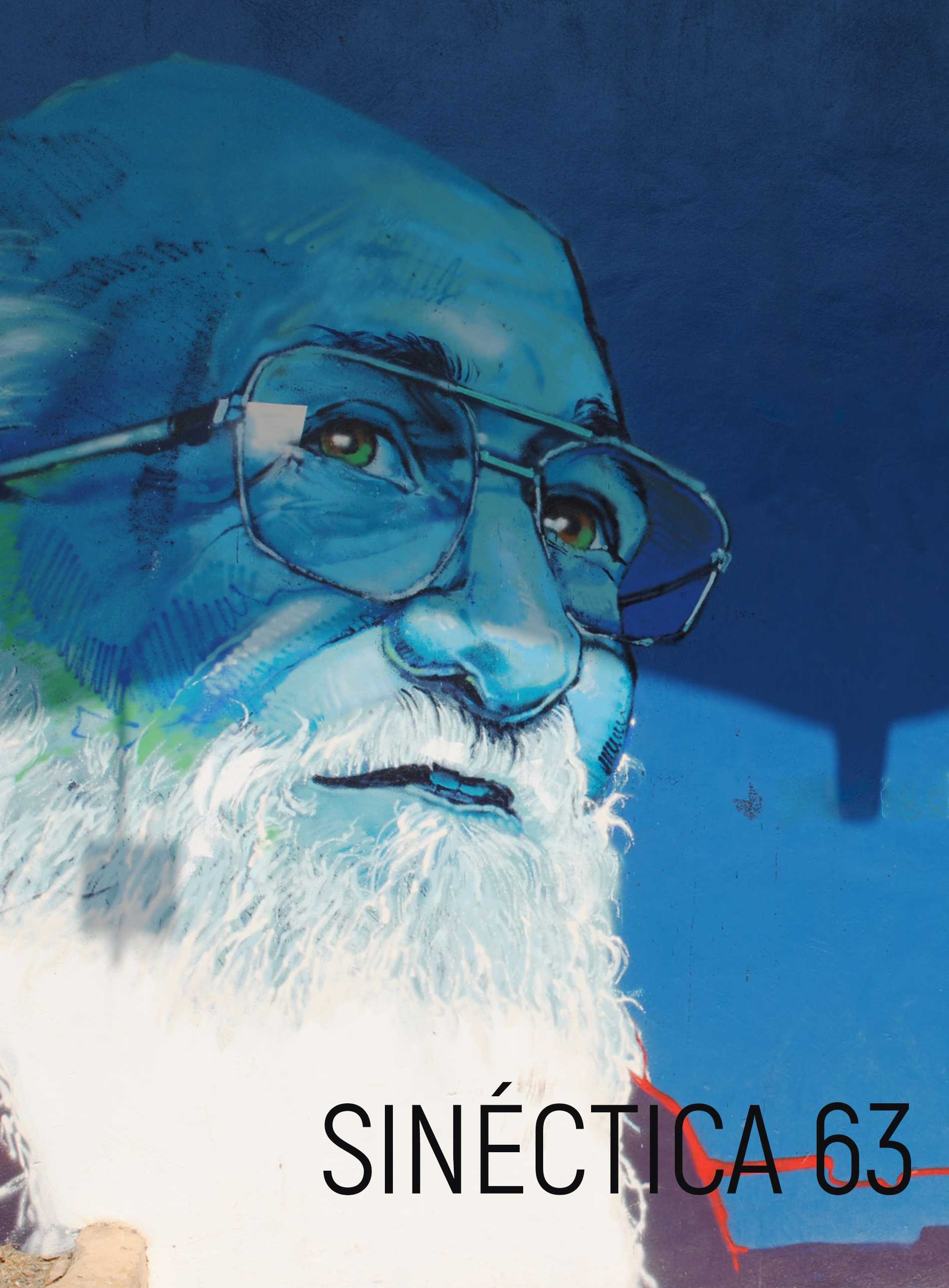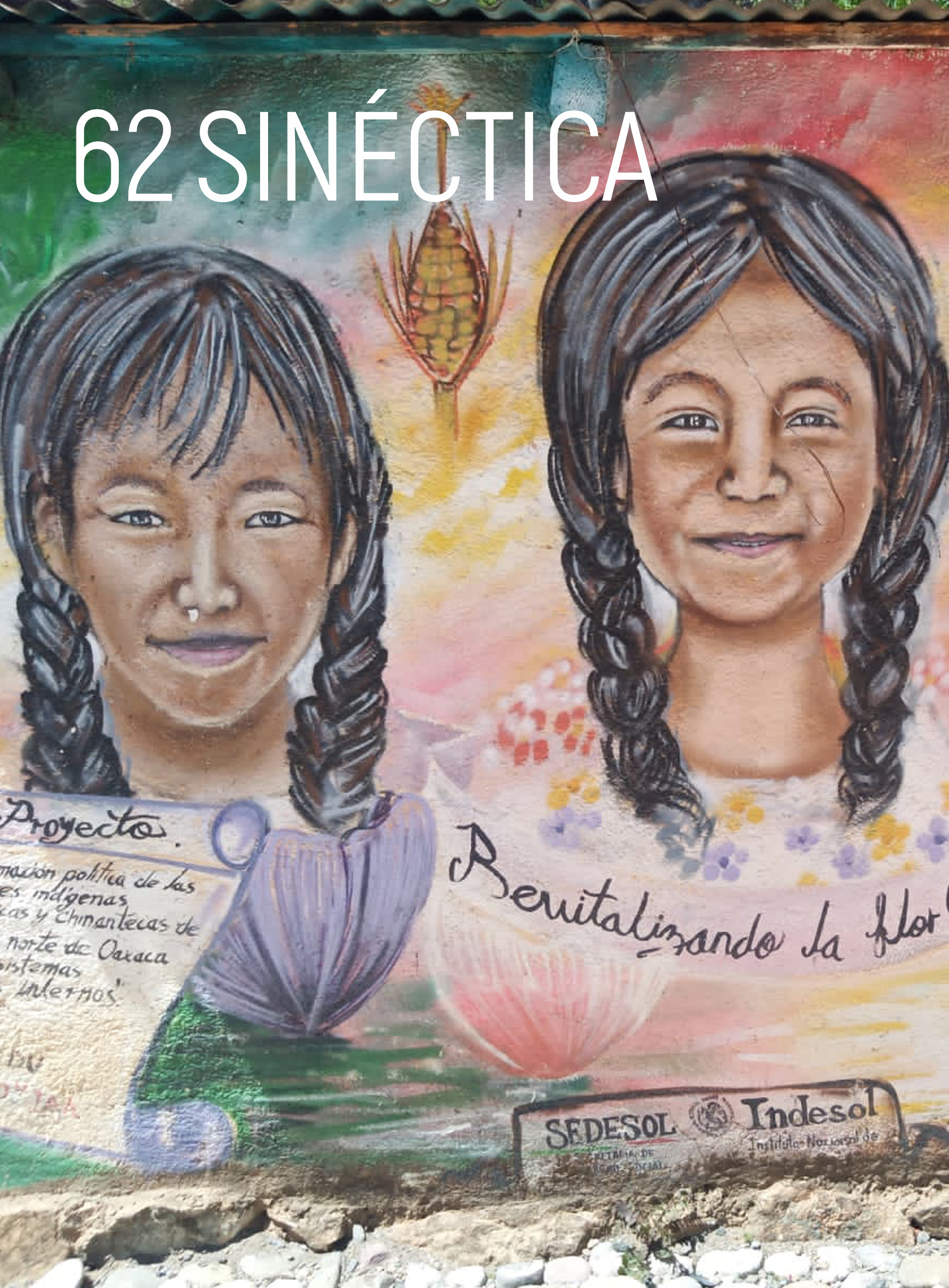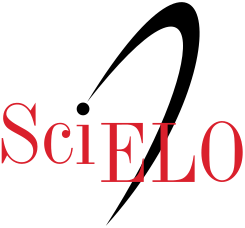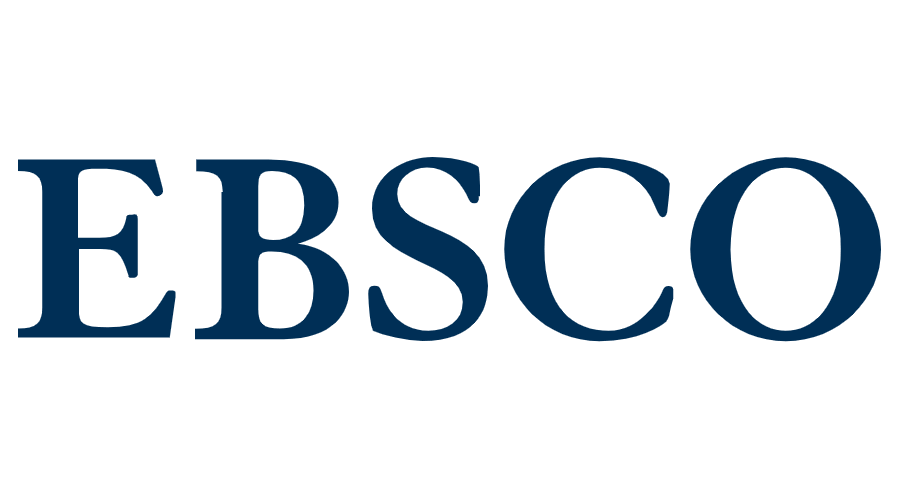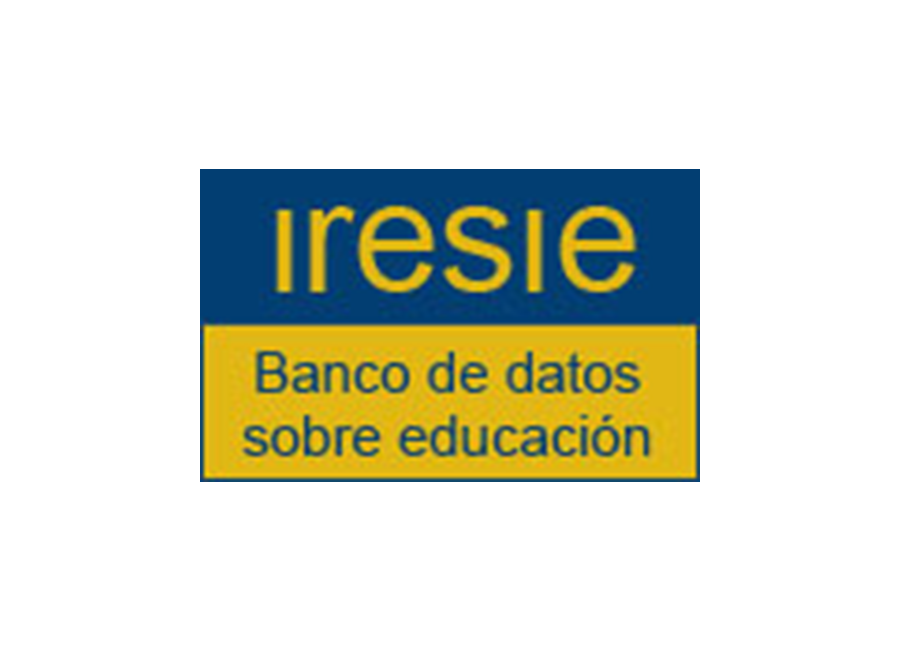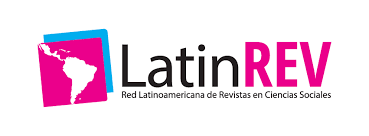Excelencia del profesorado. Aportes para un estado del arte
DOI:
https://doi.org/10.31391/S2007-7033(2019)0053-016Keywords:
excelencia, profesorado y universidadAbstract
Los objetivos del artículo son construir un marco teórico que respalde el estudio de la excelencia del profesorado universitario en futuras investigaciones e identificar los rasgos profesionales que contribuyen al buen desarrollo de la docencia e investigación. Ello implicó la revisión de 26 artículos en español e inglés y tres libros que se han publicado sobre el tema en México, España, Estados Unidos y China, cuyos aportes más relevantes se analizaron de manera sistemática y se agruparon en tres competencias: personales, docentes y científicas. Los resultados permitieron conocer que la excelencia del profesorado universitario es un concepto polisémico en constante construcción y que ha cobrado importancia en los últimos diez años debido a las políticas educativas que promueven la calidad en las universidades. Su práctica encierra un conjunto de cualidades y habilidades intelectuales y socioemocionales que favorecen la producción científica, la construcción de ambientes de aprendizaje significativos, el trabajo en equipo y una buena relación con sus estudiantes.
Downloads
References
Akkerman, S. & Meijer, P. (2011). A dialogical approach to conceptualizing teachers’ identity: a dialogical approach. Teachers and Teacher Education, vol. 27, núm. 2, pp. 308-319. https://doi.org/10.1016/j.tate.2010.08.013
Anderson, D. (2002). Creative teachers: Risk, responsibility and love. Journal of Education, vol. 183, núm. 1, pp. 33-48. https://doi.org/10.1177/002205740218300104
Araujo, L., Cruz, J. F. & Almeida, L. (2017). Achieving scientific excellence: An exploratory study of the role of emotional and motivational factors. High Ability Studies, vol. 28, núm. 2, pp. 249-264. https://doi.org/10.1080/13598139.2016.1264293
Quijada Lovatón, Karin Yovana (2018). Rasgos de la excelencia en la investigación: proactividad, pasión por el conocimiento y resiliencia. Sinectica, Revista Electrónica de Educación, núm. 51. Recuperado de https://sinectica.iteso.mx/index.php/SINECTICA/article/view/877/1021
Quijada Lovatón, Karin Yovana (2017). La formación de la identidad profesional de los académicos de la Universidad de Colima y la Universidad Autónoma de Sinaloa. Un análisis comparativo. Tesis de doctorado. Universidad Nacional Autónoma de México.
Badia, A., Meneses, J. & Monereo, C. (2014). Affective dimension of university professors about their teaching: An exploration through the semantic differential technique. Universitas Psychological, vol. 13, núm. 1, pp. 161-173. https://doi.org/10.11144/Javeriana.UPSY13-1.adup
Bain, K. (2004). Lo que hacen los mejores profesores universitarios. Valencia: Universitat de Valencia.
Ball, S. (2003). The teacher's soul and the terrors of performativity. Journal of Education Policy, vol. 18, núm. 2, pp. 215-228. https://doi.org/10.1080/0268093022000043065
Ball, S. (1989). Ortodoxia y alternativa. En S. Ball (coord.). La micropolítica de la escuela. Hacia una teoría de la organización escolar (pp. 19-44). España: Paidós.
Benito, B. (2006). Las relaciones interpersonales de los profesores en los centros educativos como fuente de satisfacción. En Convergencia con Europa y cambio en la universidad: XI Conferencia de Sociología de la Educación: Santander (pp. 218-219).
Bolívar, A. (2006). Construcción de la identidad profesional del profesorado. En A. Bolívar (coord.). La identidad profesional del profesorado de secundaria: crisis y reconstrucción (pp. 57-80). España: Aljibe.
Bolívar, A. y Bolívar-Ruano, R. (2014). Docencia e investigación en el contexto de la universidad actual. Espaço Pedagógico, vol. 21, núm. 2, pp. 380-402. https://doi.org/10.5335/rep.v21i2.4307
Bolívar, A. y Caballero, K. (2008). Cómo hacer visible la excelencia en la enseñanza universitaria. Revista Iberoamericana de Investigación, núm. 4, pp. 1-10. Recuperado de https://rieoei.org/RIE/article/view/1894
Brown, S., Barkley, R. & Higginbotham, J. (2011). Pre-service teachers’ attitudes towards teaching diverse learners. Journal of Multiculturalism in Education, núm. 7, pp. 1-30. https://doi.org/10.1177/0022487112466899
Burkill, S. (2002). Recognising and rewarding excellent teachers: Towards a strategy for geography departments. Journal of Geography in Higher Education, vol. 26, núm. 3, pp. 253-262. https://doi.org/10.1080/0309826022000019846
Chen, C, O’Sullivan, P., Teherani, A., Fogh, S., Kobashi, B & Cate, O. (2015). Sequencing learning experiences to engage different level learners in the workplace: An interview study with excellent clinical teachers. Medical Teacher, vol. 37, pp. 1090–1097. https://doi.org/10.3109/0142159X.2015.1009431
Cid Sabucedo, A., Pérez, A. y Zabalza, M. (2013). Las prácticas de enseñanza realizadas/observadas de los mejores profesores de la universidad de Vigo. Educación XX1, vol. 16, núm. 2, pp. 265-295. https://doi.org/10.5944/educxx1.16.2.2643
Cooper, B. (2004). Empathy, interaction and caring: Teachers’ roles in a constrained environment. Pastoral Care in Education, vol. 22, núm. 3, pp. 12-21. https://doi.org/10.1111/j.0264-3944.2004. 00299.x
Day, C. (2011). Por qué es esencial la pasión. En C. Day (coord.). Pasión por enseñar. La identidad personal y profesional del docente y sus valores (pp. 29-31). Madrid: Narcea.
Duran-Bellonch, M. e Ion, G. (2014). Investigadoras con éxito en la universidad. ¿Cómo lo han logrado? Educación XX1, vol. 17, núm. 1, pp. 39-58. https://doi.org/10.5944/educxx1.17.1.10704
Escámez, J. (2013). La excelencia en el profesor universitario. Revista Española de Pedagogía, núm. 254, pp. 11-27. Recuperado de https://revistadepedagogia.org/lxxi/no-254/la-excelencia-en-el-profesor-universitario/101400010284/
Freedman, K. (2003). Teaching visual culture: Curriculum, aesthetics and the social life of art. Nueva York: Teachers College Press.
Galaz, J. F. (2003). La satisfacción laboral de los académicos en una universidad pública estatal. México: Asociación Nacional de Universidades e Instituciones de Educación Superior.
García-López, R., Jover, G. y Escámez, J. (2010). Profesión docente y ética profesional. En R. García-López, G. Jover y J. Escámez (coords.). Ética profesional docente (pp. 13-36). España: Síntesis.
García-Romero, A. (2012). Influencia de la carrera investigadora en la productividad e impacto de los investigadores españoles. El papel de la ventaja acumulativa. Revista Española de Documentación Científica, vol. 35, núm. 1, pp. 38-60. https://doi.org/10.3989/redc.2012.1.762
Gil-Antón, M. (2009). ¿Segmentación o diversificación?: una aproximación a las condiciones de la profesión académica en México. En N. Stromquist (coord.). La profesión académica en la globalización (pp. 53-100). México: ANUIES.
Gil-Antón, M. et al. (1994). Los rasgos de la diversidad. Un estudio sobre los académicos mexicanos (pp. 23-88). México: UAM-A/UABCS/UNISON/IPN/UNAM/UANL/UDG/UAP/UV/UAH/ITP.
Gómez-Nashiki, A. (2019). La excelencia en el profesorado universitario. El caso del posgrado de la Universidad de Colima, México. Praxis Sociológica, núm. 24, pp. 79-104. Recuperado de https://www.praxissociologica.es
Goroshit, M. & Hen, M. (2016). Teachers’ empathy: Can it be predicted by self- efficacy? Teachers and Teaching, vol. 7, pp. 805-818. https://doi.org/10.1080/13540602.2016.1185818
Gorsky, P., Caspi, A., Antonovsky, A., Blau, I. & Mansur, A. (2010). The relationship between academic discipline and dialogic behavior in open university course forums. International Review of Research in Open and Distance Learning, vol.11, núm. 2, pp. 49-72. https://doi.org/10.19173/irrodl.v11i2.820
Grau, S., Gómez, C. y Perandones, T. (2009). La formación del profesorado como factor decisivo de la excelencia educativa. En C. Gómez y S. Grau (coords.). Propuestas de diseño, desarrollo e innovaciones curriculares y metodología en el EEES (pp. 7-26). España: Marfil, Universidad de Alicante.
Guzmán, J. (2009). ¿Cómo enseñan psicología los profesores efectivos? Un estudio exploratorio. Perfiles Educativos, vol. XXX, núm. 123, pp. 8-26. https://doi.org/10.22201/iisue.24486167e.2009.123.18813
Halpern, D. (1998). Teaching critical thinking for transfer across domains: Disposition, skills, structure training, and metacognitive monitoring. American Psychologist, vol. 53, núm. 4, pp. 449. Recuperado de https://eric.ed.gov/?id=EJ582977
Hargreaves, A. (1998). The emotional practice of teaching. Journal Teaching and Education, vol. 14, núm. 8, pp. 835-854. https://doi.org/10.1016/S0742-051X(98)00025-0
Hargreaves, A. y Fullan, M. (2014). Perspectivas enfrentadas de la enseñanza. En A. Hargreaves y M. Fullan (coords.). Capital profesional. Transformar la enseñanza en cada escuela (pp. 31-47). España: Morata.
Hen, M. (2010). Sense of self-efficacy and empathy among teachers who include in their classrooms students with special needs. Journal of Study and Research: Vision and Practice, vol. 13, pp. 134-165.
Henriksen, D. (2016). The seven transdisciplinary habits of mind of creative teachers: An exploratory study of award-winning teachers. Journal Thinking Skills and Creativity, vol. 22, pp. 212–232. https://doi.org/10.1016/j.tsc.2016.10.007
Hernández, F. (2002). Docencia e investigación en educación superior. Revista de Investigación Educativa, vol. 20, núm. 2, pp. 271-301. Recuperado de http://revistas.um.es/rie/article/view/98921
Hirsch, A. (2019). Un estudio sobre el profesorado de posgrado de la Universidad Nacional Autónoma de México. Praxis Sociológica, núm. 24, pp. 47-60. Recuperado de https://www.praxissociologica.es
Johnson-Farmer, B. & Frenn, M. (2009). Teaching excellence: What great teachers teach us. Journal of Professional Nursing, vol. 25, núm. 5, pp. 267–272. https://doi.org/10.1016/j.profnurs.2009.01.020
Kane, R., Sandretto, S. & Heath, C. (2004). An investigation into excellent tertiary teaching: Emphasising reflective practice. Higher Education, vol. 47, pp. 283-310. https://doi.org/10.1023.0000016442.55338.24
Keeley, J., Ismail, E. & Buskist, W. (2016). Excellent teachers’ perspectives on excellent teaching. Teaching of Psychology, vol. 43, núm. 3, pp. 175-179. https://doi.org/10.1177/0098628316649307
Kirk, B., Schutte, N. & Hine, D. (2008). Development and preliminary validation of an emotional self-efficacy scale. Personality and Individual Differences, vol 45, pp. 432-436. https://doi.org/10.1016/j.paid.2008.06.010
Knight, P. (2005). Personas, tiempos y lugares. En P. Knight (coord.). El profesorado de educación superior: formación para la excelencia (pp. 15-132). Madrid: Narcea.
Kristjuhan, U. & Taidre, E. (2012). High work ability in the scientific activity of older and experienced academics. Journal Work, vol. 41, núm. 1, pp. 313-315. https://doi.org/10.3233/WOR-2012-0175-313
Liu, S., Keeley, J. & Buskist, W. (2016). Chinese college students’ Perceptions of excellent teachers across three disciplines: Psychology, chemical engineering, and education. Teaching of Psychology, vol. 43, núm.1, pp. 70-74. https://doi.org/10.1177/0098628315620888
López-Zavala, R., Durán, E., Félix, V., Solís, M.L. y Ruelas, J. P. (2013). Valores de los profesores y estudiantes en México 2002-2011. En A. Hirsch y T. Yurén (coords.). La investigación en México en el campo de educación y valores 2002-2011 (pp. 273-316). México: ANUIES, colección Estados del Conocimiento.
MacDonald, A. (2010). Exploring the characteristics of ‘teachers for excellence’: teachers’ own perceptions. European Journal of Teacher Education, vol. 33, núm. 3, pp. 265–277. https://doi.org/10.1080/02619768.2010.492854
Martínez, E. (2010). Actitudes éticas del profesor en relación consigo mismo, con el contexto ético político y con sus alumnos (pp. 131-160). En E. Martínez (coord.). Ética profesional de los profesores. Bilbao: Desclée de Brouwer.
McAllister, G. F. & Irvine, J. J. (2002). The role of empathy in teaching culturally diverse students: A qualitative study of teachers' beliefs. Journal of Teacher Education, vol. 53, núm. 5, pp. 433-443. https://doi.org/10.1177/002248702237397
McGaughey, J. (1992). Symbolic leadership: Redefining relations with the host organization. New Directions for Adult y Continuing Education, núm. 56, pp. 39-50. https://doi.org/ 10.1002/ace.36719945606
Mendieta, A y Pérez, A. (2013). La formación de investigadores-profesores en la calidad de la educación superior en México. Revista Iberoamericana para la Investigación y el Desarrollo Educativo, vol. 3, núm. 6, pp. 110-125. Recuperado de https://www.ride.org.mx/index.php/RIDE/article/view/75
Mishra, P., Koehler, M. & Henriksen, D. (2011). The seven trans-disciplinary habits of mind: Extending the tpack framework towards 21st century learning. Educational Technology, vol. 11, núm. 2, pp. 22-28. Recuperado de https://eric.ed.gov/?id=EJ917291
Monereo, C. y Domínguez, C. (2014). La identidad docente de los profesores universitarios competentes. Educación XX1, vol. 17, núm. 2, pp. 83-104. https://doi.org/10.5944/educxx1.17.2.11480
Preston, S & De Waal, F. (2002). Empathy: Its ultimate and proximal bases. Behavioral and Brain Sciences, vol. 25, pp. 1-20. https://doi.org/10.1017/S0140525X02000018
Remedi, E. y Ramírez, R.G. (2016). Los científicos y su quehacer. Perspectivas en los estudios sobre trayectorias, producciones y prácticas científicas (pp. 11-444). México: Biblioteca de la Educación Superior-Asociación Nacional de Universidades e Instituciones de Educación Superior.
Reyero, D. (2014). La excelencia docente universitaria. Análisis y propuestas para una mejor evaluación del profesorado universitario. Educación XX1, vol. 17, núm. 2. https://doi.org/10.5944/educxx1.17.2.11482
Rivas, L. (2011). Las nueve competencias de un investigador. Investigación Administrativa, núm. 108, pp. 34-54. Recuperado de https://biblat.unam.mx/es/revista/investigacion-administrativa/articulo/las-nueve-competencias-de-un-investigador
Root-Bernstein, R. (1996). The sciences and arts share a common creative aesthetic. En A. Tauber (coord.). The elusive synthesis: Aesthetics and science (pp.49-82). Netherlands: Kluwer.
Rueda, M. y Luna, E. (2014). La valoración del desempeño docente en las universidades. En M. Rueda (coord.). ¿Evaluar para controlar o para mejorar? Valoración del desempeño docente en las universidades (pp. 9-30). México: Instituto de Investigaciones sobre la Universidad y la Educación-UNAM.
Sié, L. & Yakhlef, A. (2013). The passion for knowledge: Implications for its transfer. Knowledge and Process Management, vol. 20, núm. 1, pp. 12-20. https://doi.org/10.1002/kpm.1402
Song, L. & Chen, J. (2012). University students’ conceptions of an excellent physical education teacher in China. European Physical Education Review, vol. 19, núm. 1, pp. 110-126. https://doi.org/10.1177/1356336X12465512
Stojiljković, S., Djigić, G. & Zlatković, B. (2012). Empathy and teachers’ roles. Procedia-Social and Behavioral Sciences, núm. 69, pp. 960-966. https://doi.org/10.1016/j.sbspro.2012.12.021
Stromquist, N. (2009). La profesión académica frente a las cambiantes expectativas sociales e institucionales. En N. Stromquist (coord.). La profesión académica en la globalización (pp. 13-54). México: ANUIES.
Stronge, J., Ward, T. & Grant, L. (2011). What makes good teachers good? A cross-case analysis of the connection between teacher effectiveness and student achievement. Journal of Teacher Education, vol. 62, núm. 4, pp. 339-355. doi: 10.1177/0022487111404241
Swan, P. & Riley, P. (2015). Social connection: empathy and mentalization for teachers. Pastoral Care in Education, vol. 33, núm. 4, pp. 220-233. https://doi.org/10.1080/02643944.2015.1094120
Tettegah, S. & Anderson, C. (2007). Pre-service teachers’ empathy and cognitions: Statistical analysis of text data by graphical models. Contemporary Educational Psychology, vol. 32, pp. 48-82. https://doi.org/10.1016/j.cedpsych.2006.10.010
Vajoczki S., Savage P., Martin L., Borin P. & Kustra E. (2011). Good teachers, scholarly teachers and teachers engaged in scholarship of teaching and learning: A case study from McMaster University, Hamilton, Canada. The Canadian Journal for the Scholarship of Teaching and Learning, vol. 2, núm. 1, pp. 1-27. https://doi.org/10.5206/cjsotl-rcacea.2011.1.2
Vázquez, V. y Escámez, J. (2010). La profesión docente y la ética del cuidado. Revista Electrónica de Investigación Educativa, pp. 1-18. Recuperado de https://redie.uabc.mx/redie/article/view/249/409
Visser-Wijnveen, G., Stes, A. & Petegem, P. (2014). Clustering teachers' motivations for teaching. Teaching in Higher Education, vol. 19, núm. 6, pp. 644-656. https://doi.org/10.1080/13562517.2014.901953
Walter, H. (2012). Social cognitive neuroscience of empathy: Concepts, circuits, and genes. Emotion Review, vol. 4, núm. 9-17. https://doi.org/10.3102/00346543054002143
Warren, C. (2015). Conflicts and contradictions: Conceptions of empathy and the work of wood-intentioned early career white female teachers. Urban Education, vol. 50, núm. 5, pp. 572-600. https://doi.org/10.1177/0042085914525790
Weisberg, R. (2006). Creativity: Understanding innovation in problem solving, science, invention and the arts. Hoboken, NJ: Wiley.
Wróbel, M. (2013). Can empathy lead to emotional exhaustion in teachers? the mediating role of emotional labor. International Journal of Occupational Medicine and Environmental Health, vol. 26, núm. 4, pp. 581–592. https://doi.org/10.2478/s13382-013-0123-1
Young, S. & Shaw, D. G. (1999). Profiles of effective college and university teachers. The Journal of Higher Education, vol. 70, núm. 6, pp. 670-686. https://doi.org/10.2307/2649170
Yurén, T. (2005). Ethos y autoformación en los dispositivos de formación de docentes. En T. Yurén, C. Navia y C. Saenger (coords.). Ethos y autoformación del docente. Análisis de dispositivos de formación de profesores (pp. 19-48). México: Pomares.
Zhem, S. & Kottler, J. (1993). On being a teacher: The human dimension. California: Corwin Press.
Zhang, Y. (2017). Walking a mile in their shoes: Developing pre-service music teachers’ empathy for, in ELL students. International Journal of Music Education, vol. 35, núm. 3, pp. 425-434. https://doi.org/10.1177/0255761416647191
Downloads
Additional Files
Published
Issue
Section
License
Copyright (c) 2019 Sinéctica

This work is licensed under a Creative Commons Attribution-NonCommercial 4.0 International License.
This work is licensed under a Creative Commons Attribution-NonCommercial 4.0 International license.
Authors who publish in Sinéctica agree to the following terms:
The authors retain copyright and grant the journal the right of first publication of the authorized work simultaneously under a Creative Commons Attribution License, which allows others to share the work as long as both the authorship of the work and the initial publication in this journal are acknowledged.
Authors may enter into additional separate contractual agreements for non-exclusive distribution of the published version of the journal (e.g., publishing in an institutional repository or a book), with acknowledgement of initial publication in this journal.
Authors are allowed to publish their work in institutional repositories or on their own website before and during the submission process, as it may generate productive exchanges, as well as earlier and greater citation of the published work.
Explanatory note: As of 2017 Sinéctica is governed by the Creative Commons Attribution Non-Commercial 3.0 International License, a version that standardizes licenses internationally.
Articles published between 1992 and 2016 are covered by a Creative Commons Attribution-NonCommercial-NoDerivatives 4.0 International license, which allows a work to be shared and distributed non-commercially and with acknowledgement of the author, but prohibits modification of the original creation.




